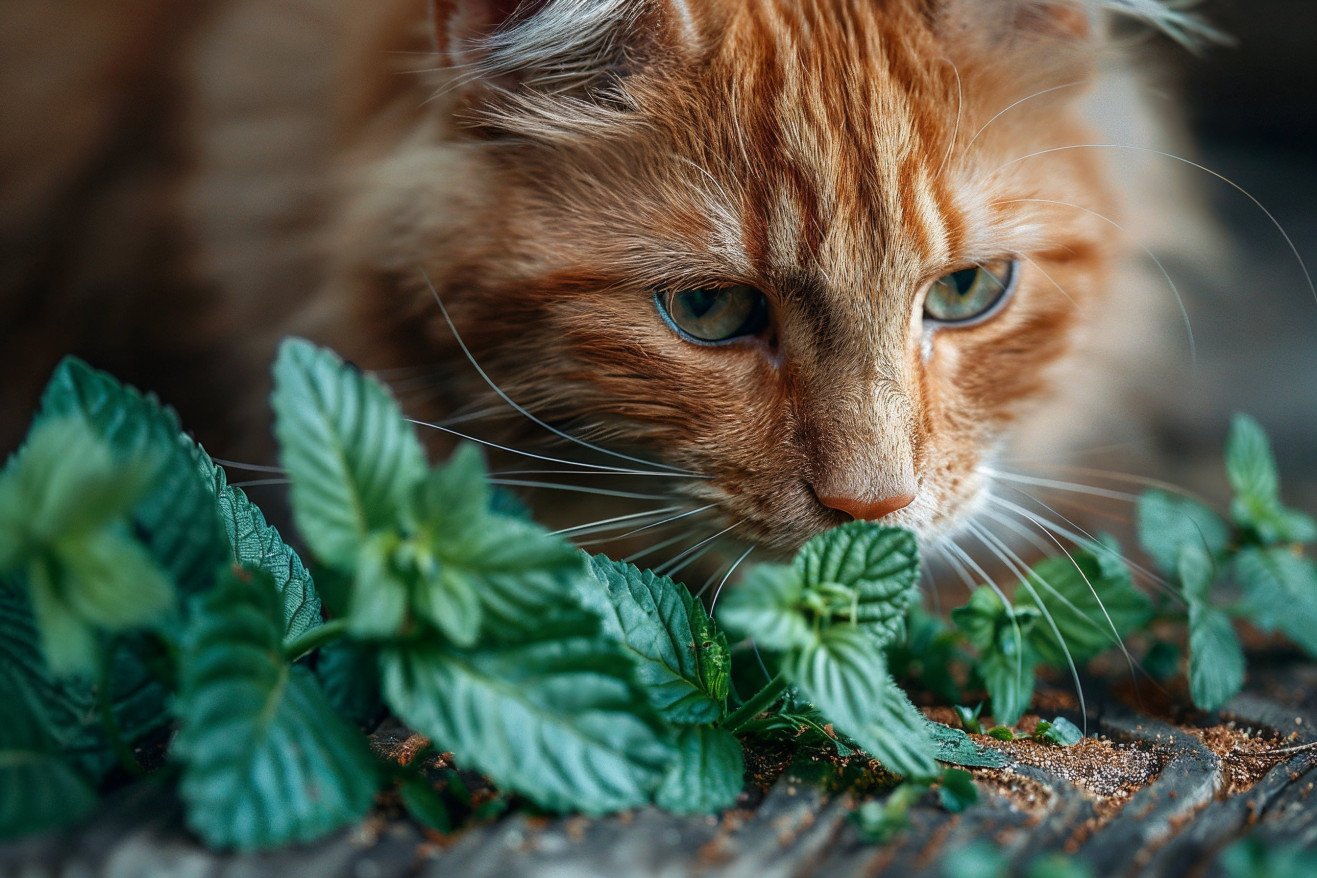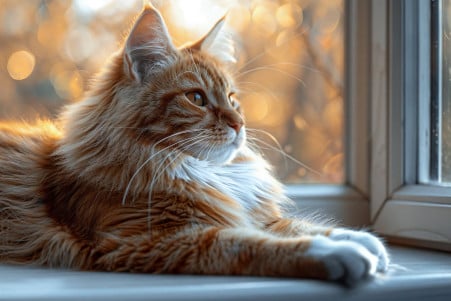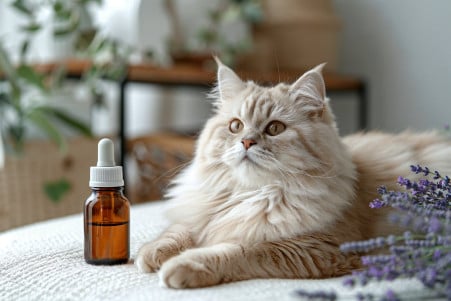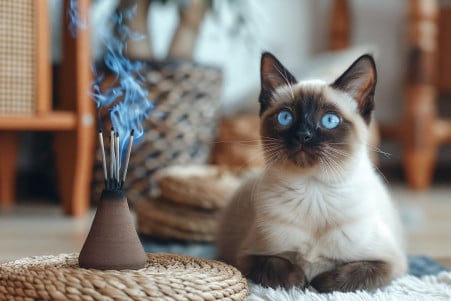Smells That Attract Cats: Scents Your Kitty Will Love
4 May 2024 • Updated 3 May 2024

Cats have a highly developed sense of smell that enables them to be discerning about the scents they encounter, with some smells piquing their interest and others leading to avoidance. So, what smells are most likely to appeal to your cat? Some of the most attractive scents for cats include catnip, valerian root, and the pheromones found in Tatarian honeysuckle and benzoin. Cats also tend to like earthy, musky scents, which can be found in dried herbs and spices such as curry. On the other hand, cats tend to dislike citrus, perfumes, cleaners, and some essential oils.
In this article, we will explore the smells that attract cats, drawing on a range of sources including animal behavior research, biological studies of feline olfactory receptors, and the experiences of cat lovers and professionals. This comprehensive approach will help us understand the evolutionary basis for cats' scent preferences and dislikes, as well as offer practical advice for creating an olfactory environment that cats will find appealing.
What scents do cats like?
Evolutionary Explanations for Cats' Scent Preferences
Cats' attraction to certain plant-based scents like catnip and valerian root may be due to their history as hunters and scavengers, as evidence cited by Fear Free Happy Homes explains. These plants can mimic pheromones and stimulate cats' instinctual responses to mating, territory marking, or hunting. Meanwhile, cats' preference for musky, earthy scents may be a holdover from their wild ancestors' need to detect the odors of potential prey and predators, as research from The Cat Care Clinic notes.
Cats' dislike of citrus and other strong scents may be an evolutionary adaptation that helped cats avoid ingesting potentially toxic substances that would have been dangerous to their survival in the wild. As a study cited by ScienceDirect explains, understanding the biological roots of these scent preferences can help us better understand cats' instinctual behaviors and needs that have been passed down from their ancestors.
By considering the evolutionary reasons for why certain scents are attractive or aversive to today's domestic cats, we can more effectively meet their innate olfactory needs. This evolutionary perspective helps explain why cats may be drawn to or repelled by certain scents, even if these reactions seem strange from a human perspective, they can be understood as a product of cats' survival-based adaptations.
Safe Plants and Herbs for Feline Enrichment
Many popular houseplants are toxic to cats if they are eaten, including lilies, aloe vera, and sago palms, according to the ASPCA's list of toxic and non-toxic plants. However, there are still safe plant options that can be used to enrich a cat's environment with scent. The Ultimate List of Toxic Plants for Cats lists cat grass, catnip, valerian root, and certain mints as examples of plants that are both safe and appealing to cats.
It's important to introduce these plants slowly and observe a cat's response to ensure that they don't have any negative reactions, according to Cordova Vet. In addition, dried herbs and spices like cinnamon, ginger, and rosemary can be used to enrich a cat's environment with scent if they are used correctly. By providing safe plants and herbs that can be used to enrich a cat's environment with scent, pet parents can encourage natural behaviors like scratching, rubbing, and exploring new smells.
Although there are some risks associated with certain houseplants, there are still plenty of cat-safe options that can be used to create a stimulating olfactory environment. Knowing which scents and materials are safe for cats is essential for anyone who wants to use scent enrichment in their home.
Essential Oils and Synthetic Fragrances: Hazards for Cats
Many essential oils, including wintergreen, citrus, and peppermint, are toxic to cats when inhaled or ingested, according to PetMD. Cats that have been poisoned by essential oils will exhibit symptoms such as drooling, vomiting, tremors, and respiratory distress, all of which can be fatal. Cats are especially at risk because they frequently groom themselves and are unable to metabolize certain substances in essential oils.
Synthetic fragrances in cleaning products, air fresheners, and personal care items can also pose a risk to cats. If a cat has been exposed to a potentially toxic fragrance, it's important to remove them from the area and get them to a vet immediately, according to the ASPCA.
Although some scents may be attractive to cats, it's important to know the potential hazards of concentrated essential oils and synthetic fragrances to keep them safe and healthy. Using scented products responsibly and taking action if a cat is exposed to a toxic scent can help keep your feline friend safe.
Scent Enrichment: Improving a Cat's Environment
Scent enrichment can help stave off boredom, encourage natural behaviors, and improve the overall mental health of cats, according to PetGuide. Some methods of scent enrichment include opening windows to let in outdoor scents, adding safe plants and herbs to the environment, and using toys that smell like their owner, as pointed out by Dezi & Roo.
One way to ensure that scent enrichment continues to be effective is to rotate the different scents that are used. This can help keep the cat's environment interesting and prevent the cat from getting used to and ignoring certain scents. However, it's important to note that new scents can sometimes make urine marking worse in some cats, so it's important to watch for any negative reactions and consult a veterinarian if you have any concerns, according to Delmar Animal Hospital.
In order to be most effective, scent enrichment should be used in conjunction with other types of environmental enrichment so that the cat has a multi-sensory experience. This will ensure that the cat has a wide range of stimuli to interact with and satisfy their natural curiosity. By taking a cat's sense of smell into account, cat owners can make sure that their cats are in an environment that is as enriching and comforting as possible.
The Power of Smell: How Cats Use Their Sense of Smell
Cats have an incredibly powerful sense of smell, and according to BetterPet, they have two olfactory systems that work in tandem. This enables them to detect a wide range of smells, and they use their sense of smell for everything from finding food to finding a mate. Cats have more than 200 million odor-detecting cells in their noses, while humans have just 5 million, and their sense of smell is even better than dogs, says PAWS Chicago.
This strong sense of smell means that cats can actually smell their food before they eat it, according to The Cat Care Clinic. Cats can also tell each other apart by their scents and may even be able to smell changes in the body chemistry of humans and other animals that indicate illness, says Feliway. Learning about how cats perceive and use smells can help you better understand your cat and meet their needs, enabling you to provide a more stimulating environment for your pet.
Conclusion: How to Create the Purr-fect Olfactory Environment
Cats have a highly developed sense of smell that is important for their behavior and well-being. By providing safe, enriching scents such as catnip, herbs, and earthy smells, cat owners can help ensure their pets are living in a more stimulating and natural environment. However, it's important to avoid potentially harmful scents such as essential oils and some plants.
Knowing a cat's evolutionary history and the limits of their sense of smell can help pet owners make informed decisions about scent introduction and enrichment. By paying attention to a cat's sense of smell, pet owners can ensure they are creating an environment that is both stimulating and safe for their furry friends.


